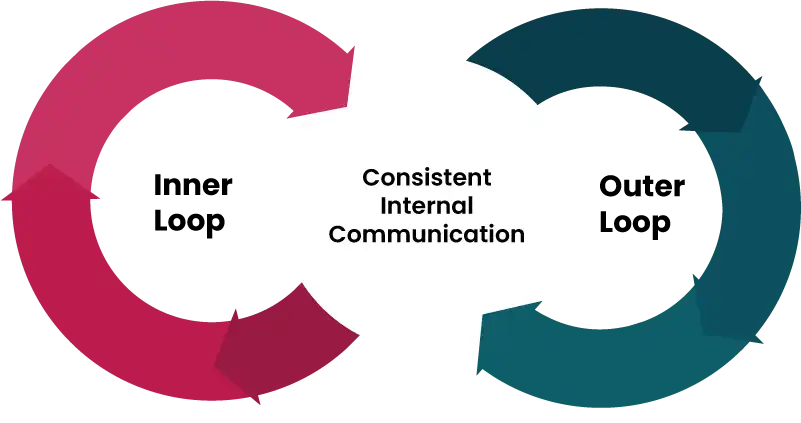TLDR:
- Customer experience is heavily influenced by perceptions of convenience, which encompasses ease of interaction and efficiency. Streamlined processes and readily available support are essential for positive experiences.
- Customers value personalized interactions and expect brands to understand their individual needs and preferences. Tailoring experiences to match these expectations fosters a sense of connection and loyalty.
- Perceptions of trust and reliability are paramount, as customers seek brands that deliver on promises and maintain consistent quality. Building this trust requires transparency, honesty, and reliable service.
Every customer interaction leaves an impression—sometimes positive, sometimes forgettable, and occasionally frustrating. But how do businesses ensure those impressions lead to loyalty and advocacy? The answer lies in structured Voice of the Customer (VoC) programmes that transform raw feedback into actionable insights. AI-assisted VoC frameworks, combined with measurement tools like the Net Promoter Score (NPS®), provide a foundation for businesses to enhance experiences systematically.
However, customer experience isn’t just about a single number. It is shaped by how well a company delivers on three key customer perceptions: effectiveness, ease of use, and enjoyability. Mastering these dimensions can define customer satisfaction, enhance brand perception, and reduce churn.
In this blog, we will explore the 3 customer perceptions to help you understand your customers better. Mastering this can define customer satisfaction, improve brand perception, increase retention, and reduce churn.
The Three Critical Dimensions That Define Customer Experience
According to Forrester Research, customer experience is defined as “how customers perceive their interactions with your company.” This perception is based on three dimensions:
Effectiveness (Did it deliver?)
The first measure of customer experience is effectiveness
Does the product or service do what it promises?
If an online banking platform claims to provide instant transactions but deposits take hours to process, customers will feel misled. If a logistics company guarantees next-day delivery but consistently fails to meet the deadline, dissatisfaction sets in.
To measure effectiveness, businesses typically use structured rating scales. A customer might rate their experience an 8 out of 10, which provides a general sentiment. But to truly understand what drives that rating, deeper insights are needed. Were transactions seamless? Was the information provided accurate? Were expectations set appropriately? Asking these follow-up questions helps pinpoint what’s working and what’s falling short.
Ease of Use (Was it effortless?)
Even if a service is effective, friction in the process can lead to frustration.
Ease of use assesses how simple and intuitive it is for customers to engage with a business.
A software platform may offer robust analytics, but if users struggle with a clunky interface, they will look elsewhere. A retailer may have excellent products, but if checkout is cumbersome, customers abandon their carts.
Ease of use is particularly important in industries where time is a scarce resource. If VoC data reveals that customers find a process unnecessarily complicated, businesses must address these barriers. High ease-of-use ratings indicate that customers can access what they need without friction, while low ratings highlight roadblocks that need immediate attention.
Enjoyability (Did it spark a positive emotion?)
Enjoyability sets the difference between a routine transaction and one that leaves a lasting impression.
Enjoyability measures the emotional connection customers have with a brand.
Think of a hotel stay. If the room is clean (effective) and the check-in process is seamless (easy to use), a guest may be satisfied. But if they receive a handwritten welcome note and a complimentary upgrade, they feel genuinely valued. If a support agent resolves an issue quickly, that speaks to effectiveness. But if they do so with warmth and genuine care, that contributes to enjoyability.

These aspects determine whether customers view their experience as positive, neutral, or negative. However, they are also very subjective and personal, meaning only customers can truly tell if they found their interactions to be useful, easy, and enjoyable.
For example, let’s say you interact with a company and feel genuinely delighted by the experience. You might describe it in glowing terms, or even tell a friend about it. But if asked to rate the experience from 0-10, you might pause for a bit before giving a number. Numbers create benchmarks, allowing businesses to compare performance across different touchpoints. Words provide context, but without numerical anchors, they can be difficult to track systematically.
This is why using the right metrics to gauge customer sentiment at scale is important. This is where the Net Promoter Score (NPS) plays a critical role.
Measuring the perception and how NPS plays a Role
One of the most widely recognised measures of customer perception is the Net Promoter Score (NPS). Rather than dissecting different experience dimensions individually, NPS captures a customer’s likelihood of recommending a company. While it may seem like a single, overarching question—”How likely are you to recommend us to a friend or colleague?”—its power lies in the way it reflects all three dimensions at once.
- Promoters (9-10): Typically experience all three dimensions—they find the product effective, easy to use, and enjoyable, leading to advocacy.
- Passives (7-8): May find the product/service functional and meet one or two perceptions but lack a strong emotional connection.
- Detractors (0-6): Often struggle strongly at least one perception, leading to frustration and dissatisfaction.

A high NPS score suggests that effectiveness, ease of use, and enjoyability are all working in harmony. A company delivering on promises (effectiveness) with minimal friction (ease of use) and a touch of delight (enjoyability) is far more likely to generate Promoters. However, a low NPS doesn’t reveal the underlying issue—it only signals that something is wrong.
Why NPS alone isn’t enough
NPS provides a valuable benchmark, but a score alone doesn’t tell the whole story. A customer who gives a 6 might have experienced slow service. Another who gives a 9 might love the product but feel it’s overpriced. Without follow-up, businesses are left guessing.
This is why following up with driver questions or an open-ended question such as “Why did you give that score?” is critical in understanding customer perceptions better.
A customer who gives a 6 might have experienced a slow checkout process. Another who gives a 9 might have loved the service but felt pricing was a bit high. Without a follow-up, businesses are left guessing what’s working and what’s not.
Many VoC programmes also include additional structured driver questions—asking customers to rate specific aspects of their experience, such as product quality, ease of interaction, or customer support. This provides clarity on what is influencing the NPS score.
As with any VoC analysis, NPS data must be complemented with deeper insights. If a company finds that promoters consistently highlight ease of use as a strong point, but detractors cite complexity as a frustration, then the path to improvement is clear. If effectiveness is rated highly but enjoyability is lacking, this signals an opportunity to create more engaging, emotionally resonant experiences.
By analysing open-ended and driver responses in NPS surveys, businesses can pinpoint which of the three perceptions (effectiveness, ease of use, or enjoyability) are driving scores up or down. This allows companies to refine their VoC strategy and address experience gaps that impact retention and brand perception.

As such, NPS is one of the most powerful tools for understanding overall customer sentiment because it reflects both functional and emotional experiences. Unlike surface-level metrics that simply look good on reports, NPS helps identify both strong advocates and potential risks within your customer base, offering a clear indication of how customer sentiment can influence growth and retention. Moreover, this feedback guides strategic business decisions such as product development, customer service enhancements, and marketing strategies by ensuring that companies remain aligned with customer needs and expectations.
A high NPS indicates strong customer loyalty, which correlates with higher retention, word-of-mouth referrals, and revenue growth.
What Is a Closed Loop Feedback?
Feedback collection is only half the battle. What truly transforms customer experience is acting on feedback, and that’s where closed-loop feedback comes into play. A closed-loop feedback system ensures that customer insights don’t just sit in a dashboard but lead to real action and improvement. When businesses listen, respond, and act on customer feedback, they directly influence the three key customer perceptions:
1. Effectiveness: Turning Feedback into Product & Service Improvements
Customers expect businesses to listen to their concerns and improve the product or service accordingly. A strong closed-loop system ensures that effectiveness gaps are identified and addressed, leading to better product-market fit and higher satisfaction.
For instance, a SaaS company notices that multiple customers mention missing functionality in their NPS survey. By prioritising feature requests and communicating updates, they enhance effectiveness.
2. Ease of Use: Reducing Friction Through Customer Insights
If customers struggle with ease of use—whether navigating a website, using an app, or accessing support—a closed-loop system helps uncover these roadblocks. By responding to usability feedback, businesses can reduce customer effort and improve accessibility.
For example, a retail brand identifies checkout friction through customer complaints. They simplify the process, reducing cart abandonment and increasing ease of use.
3. Enjoyability: Strengthening Emotional Connection Through Personalization
When customers see that a business values their input and makes improvements based on their feedback, trust and emotional loyalty grow.
An example is when brands follow up with dissatisfied guests, offering tailored solutions based on feedback. This turns a negative experience into a positive, loyalty-building moment.
Customer Experience: A Continuous Process
Customer experience is not a one-time initiative. It’s an ongoing commitment to understanding and meeting your customers’ changing needs and expectations.

For one, making a point to close the outer loop allows you to implement changes that will elevate the level of customer experience your business offers. By adopting a structured approach like this, leveraging tools like VoC and NPS, and embracing closed loop feedback, you can transform your CX programme into a competitive advantage.
Want to learn more about running VoC Programmes? Check out our downloadable guide here.







